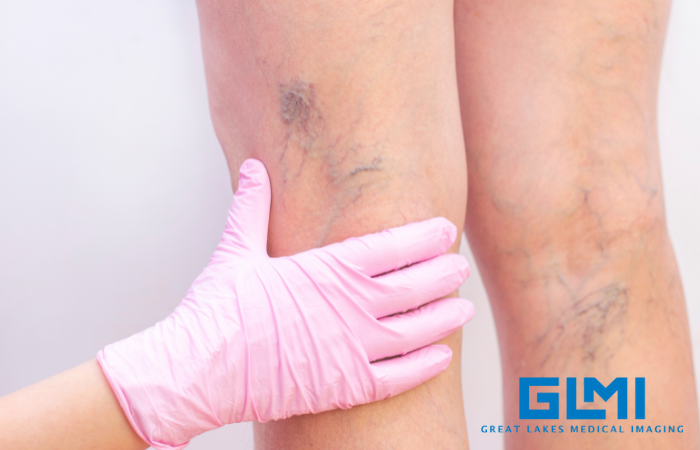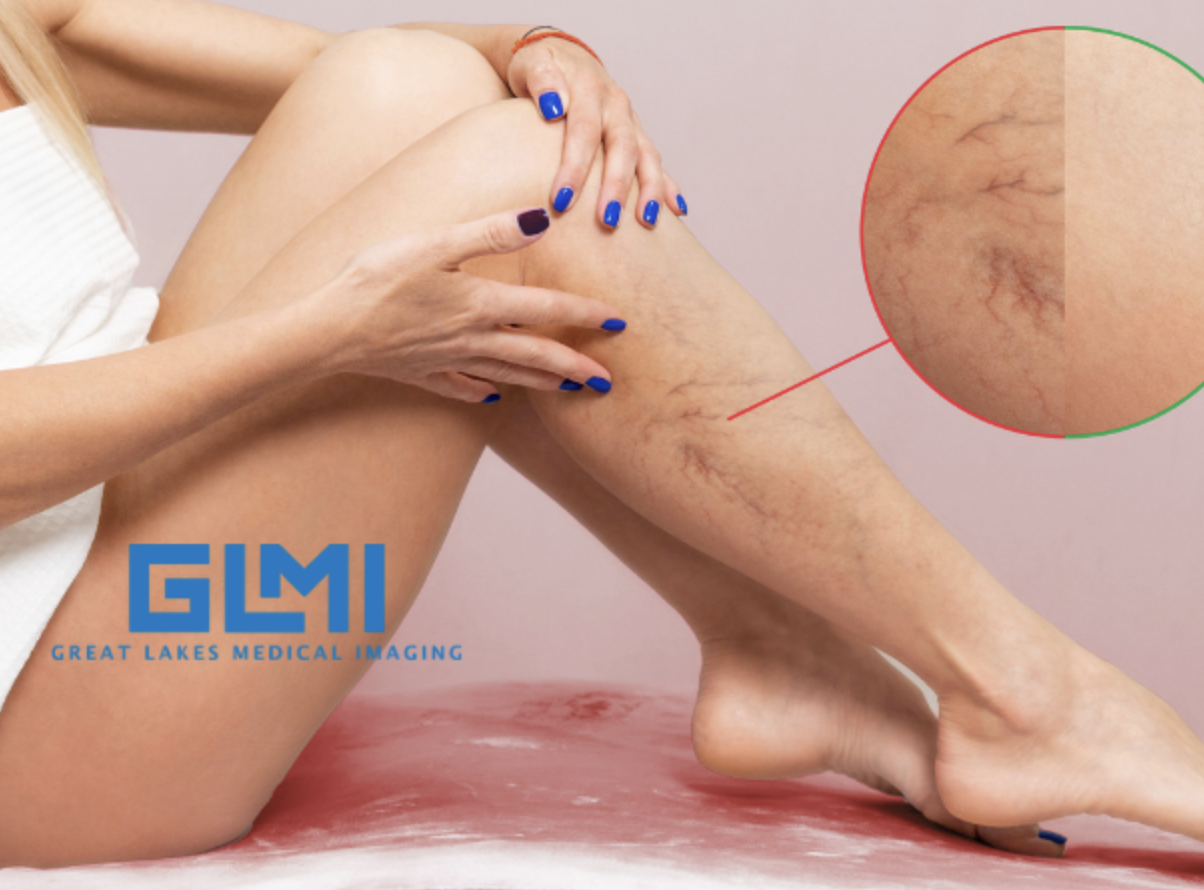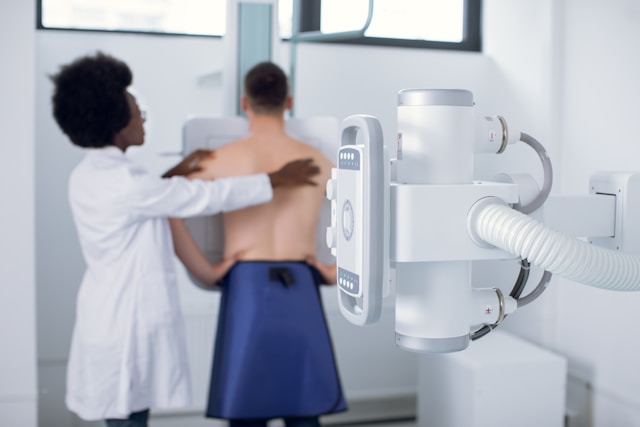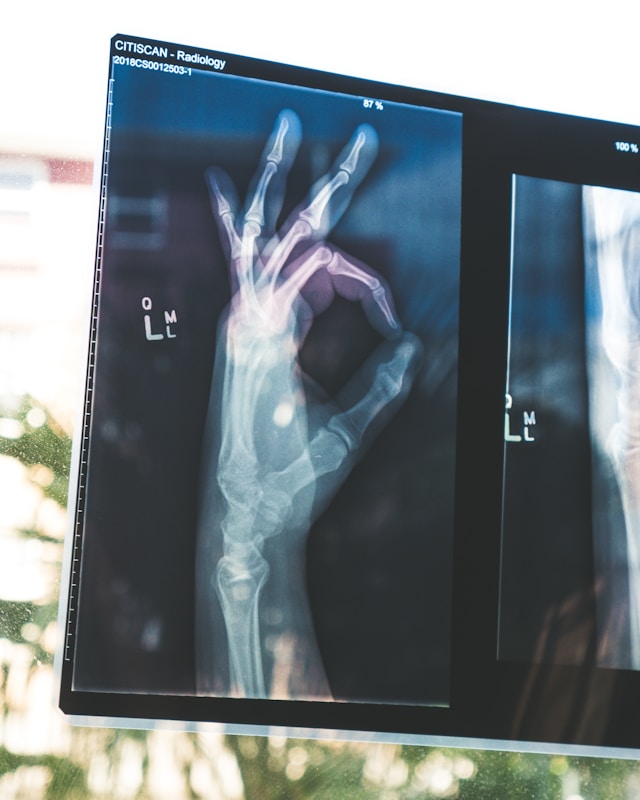Our Blog
How Does Diagnostic Imaging Help in Identifying Vascular Diseases?

Vascular diseases affect the blood vessels in the body and can lead to serious health conditions if left untreated, including heart attacks, strokes, and peripheral artery disease. Identifying these diseases early is crucial for effective treatment and management. Diagnostic imaging plays a critical role in diagnosing vascular diseases by providing detailed images of the blood vessels, arteries, and veins. For patients in Buffalo, NY, and Western NY, Great Lakes Medical Imaging (GLMI) offers advanced imaging services that help detect and diagnose vascular diseases quickly and accurately.
In this article, we will explore the types of diagnostic imaging used for vascular disease detection, how they work, and why early diagnosis is so important for managing these conditions.
What Are Vascular Diseases?
Understanding Vascular Conditions
Vascular diseases refer to conditions that affect the network of blood vessels in the body, including arteries, veins, and capillaries. Common types of vascular diseases include:
- Peripheral Artery Disease (PAD): This condition occurs when the arteries that supply blood to the limbs become narrowed or blocked, leading to pain, numbness, and other symptoms.
- Aneurysms: Aneurysms occur when a blood vessel wall weakens and bulges, potentially leading to a rupture.
- Deep Vein Thrombosis (DVT): DVT is a condition where blood clots form in the deep veins, often in the legs, which can lead to life-threatening complications like pulmonary embolism.
- Carotid Artery Disease: This condition involves the narrowing of the carotid arteries, which supply blood to the brain, and increases the risk of stroke.
Diagnosing these conditions early through advanced imaging is key to preventing serious complications and ensuring patients receive the appropriate treatments.
Types of Diagnostic Imaging for Vascular Diseases
Ultrasound
Doppler Ultrasound for Blood Flow
Ultrasound is one of the most commonly used imaging techniques to diagnose vascular diseases, especially Doppler ultrasound. This non-invasive imaging test uses sound waves to visualize the blood vessels and assess blood flow through the arteries and veins. Doppler ultrasound can detect:
- Blocked or narrowed arteries: Doppler ultrasound can identify areas where blood flow is restricted, indicating conditions like peripheral artery disease (PAD) or carotid artery disease.
- Blood clots: It helps detect the presence of blood clots in veins, such as those that cause deep vein thrombosis (DVT).
- Aneurysms: Ultrasound can reveal the size and shape of an aneurysm, which is essential for determining the severity of the condition and the appropriate treatment.
Doppler ultrasound is a painless and non-invasive test, making it an excellent first step in diagnosing vascular diseases.
CT Angiography (CTA)
Detailed Imaging of Blood Vessels
CT angiography (CTA) is a highly effective imaging technique used to visualize the blood vessels in great detail. It combines computed tomography (CT) scanning with the use of contrast material, which is injected into the bloodstream to highlight the arteries and veins.
CTA is particularly useful for:
- Detecting blockages or narrowing in the arteries: This can help identify conditions like PAD and carotid artery disease.
- Identifying aneurysms: CTA provides a clear, detailed image of aneurysms, helping doctors assess the risk of rupture.
- Evaluating blood flow to organs: CTA can help detect reduced blood flow to critical organs like the heart and brain.
At GLMI, we use advanced CT angiography to diagnose vascular diseases in Buffalo, NY, and Western NY, providing patients with accurate and timely results.
Magnetic Resonance Angiography (MRA)
Non-Radiation-Based Vascular Imaging
Magnetic resonance angiography (MRA) uses magnetic fields and radio waves to create detailed images of blood vessels without the use of X-ray radiation. MRA is particularly useful for patients who need to avoid radiation exposure, such as those who require frequent imaging.
MRA is commonly used to:
- Detect aneurysms: MRA provides clear images of aneurysms in the brain and other parts of the body.
- Diagnose arterial blockages: MRA can detect areas of narrowing or blockage in the arteries, which are often associated with PAD and other vascular diseases.
- Assess blood vessel structure: MRA can reveal abnormal blood vessel structures that may be causing symptoms or increasing the risk of stroke or other complications.
For patients in Buffalo and Western NY, GLMI offers advanced MRA services that provide high-resolution images without the risks associated with radiation exposure.
Venography
Imaging for Vein Disorders
Venography is a specialized imaging test used to assess the veins in the body. During venography, contrast material is injected into the veins, and X-ray images are taken to visualize the flow of blood. This test is often used to:
- Detect blood clots in the veins: Venography is particularly useful for diagnosing deep vein thrombosis (DVT).
- Evaluate varicose veins: It can help assess the severity of varicose veins and guide treatment options.
- Check for vein obstructions: Venography can reveal obstructions or abnormalities in the veins that may be contributing to symptoms like leg pain or swelling.
Venography is typically used when other imaging tests, such as ultrasound, do not provide enough detail to diagnose vein-related conditions.
How Diagnostic Imaging Helps Manage Vascular Diseases
Early Detection Saves Lives
One of the biggest benefits of diagnostic imaging in vascular disease management is the ability to detect conditions early. Many vascular diseases, such as PAD and carotid artery disease, may not cause noticeable symptoms until they have progressed to a more serious stage. By using advanced imaging, doctors can identify issues before they become life-threatening, allowing for timely intervention and treatment.
Early detection is especially crucial for conditions like aneurysms and DVT, where complications can be sudden and severe. With imaging tools like CTA, MRA, and ultrasound, physicians can monitor patients closely and take proactive steps to prevent complications like stroke, heart attack, or pulmonary embolism.
Guiding Treatment Decisions
Once a vascular condition has been diagnosed, imaging continues to play a vital role in guiding treatment decisions. Detailed images of the blood vessels help doctors determine the best course of action, whether that means medication, lifestyle changes, or more invasive procedures like angioplasty or surgery.
For example:
- In PAD: Imaging helps doctors assess the extent of the arterial blockage and decide whether to pursue non-invasive treatments, such as medication and lifestyle modifications, or to recommend surgical interventions like stenting.
- In aneurysms: Imaging reveals the size and growth rate of an aneurysm, helping doctors determine whether it requires monitoring or immediate surgical repair.
Why Choose GLMI for Vascular Imaging in Buffalo, NY?
State-of-the-Art Technology
At Great Lakes Medical Imaging, we use the latest imaging technology to provide precise, high-quality images that allow for accurate diagnosis and effective treatment planning. Whether you need an ultrasound, CT angiography, or MRA, our advanced equipment ensures that your imaging results are as detailed and accurate as possible.
Experienced Radiologists
Our board-certified radiologists have extensive experience diagnosing vascular diseases through a variety of imaging techniques. Their expertise allows for quick and accurate interpretations of your imaging results, ensuring you receive timely care.
Convenient Locations Across Buffalo and Western NY
GLMI offers multiple locations throughout Buffalo and Western NY, making it easy for you to access the diagnostic imaging services you need. Our convenient locations and flexible scheduling options ensure that you receive high-quality care when and where you need it.
Take Action Today
Schedule Your Vascular Imaging Appointment
If you are experiencing symptoms of a vascular condition or have been referred for diagnostic imaging, don’t wait to take control of your health. Contact us today to schedule your imaging appointment at Great Lakes Medical Imaging. Our team is here to provide the highest quality care and support for all your vascular imaging needs.
Consult with Your Healthcare Provider
If you’re unsure which imaging test is right for you, consult with your healthcare provider. They can help determine the appropriate imaging technique based on your symptoms and medical history. Early diagnosis is key to effective treatment, so don’t delay.
Contact Us for Comprehensive Vascular Imaging Services in Buffalo, NY
At GLMI, we are dedicated to providing comprehensive vascular imaging services to patients in Buffalo, NY, and Western NY. From ultrasounds to advanced CT and MRA scans, our technology and expertise ensure that you receive the best care possible. If you have any questions or need to schedule an appointment, please contact us today.
Medical Disclaimer
This article is for general informational purposes only and is not a substitute for professional medical advice. Always consult with a qualified healthcare provider regarding any medical conditions or concerns you may have.
‹ Back









